Winix 5500-2 Review
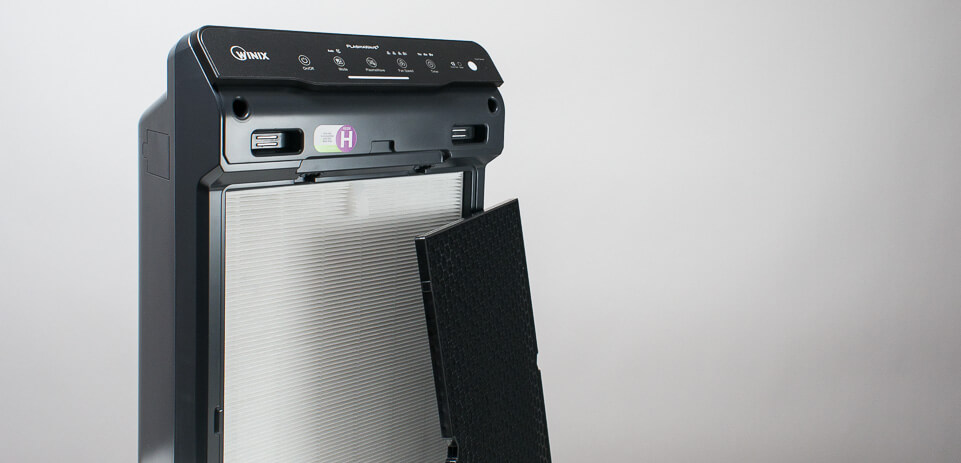
Feature Scores
Pros
- High output (CFM) for the price – 250 CFM is good for rooms up to 300 sq. ft.
- Equipped with a HEPA filter – the industry standard for particle filtration in air purifiers
- One of few units on the market at this price point with a pellet-based carbon filter. Most others have a carbon filter comprised of a fibrous material coated with carbon which is not as good for gas filtration
- Very good energy efficiency – CFM/watt ratio of close to 5/1 on highest fan speed and around 10/1 for other fan speeds. Compare this to 2 or 3/1 on all fan speeds for most other units we tested.
- Low noise output with very good CFM/dB ratios compared to competitors as well
- What we definitely like most about this unit is its great value – 250 CFM, HEPA, pellet-based carbon filter, great energy efficiency, low noise output – all of this for around $150 makes this one of the best value options on the market
Cons
- No way to turn all lights off - white LEDs that light up for most settings, the PLASMAWAVE text light turns on when you turn on the ionizer, the air quality light is a horizontal bar that also cannot be turned off. Selecting sleep mode turns all lights off EXCEPT the light that shows that sleep mode is activated (moon with z's) - this is a white light that cannot turned off.
- Only 1 year warranty – most other options on the market come with 3 to 5 year warranties
Editor's Score
Spring 2025 Update: The Winix 5500-2 has been discontinued and replaced by the Winix 5510. Both models are identical, except that the 5510 adds an updated exterior, slightly more airflow and Wi-Fi connectivity (app control). As such, we now recommend the 5510 as the best air purifier on the market. See it on Amazon.
Quick Facts
| Particle filter type | HEPA |
|---|---|
| Gas filter type | Carbon |
| Pre-Filter | Washable mesh pre-filter |
| Output | Approx. 250 CFM |
| Air Movement | Front grille > pre-filter > carbon filter > HEPA filter > up and out of top of unit |
| Number of fan speeds | 4 – low, medium, high, and turbo |
| Size | 24 in. tall x 15 in. wide x 8 in. deep |
| Weight | 16.5 lb. |
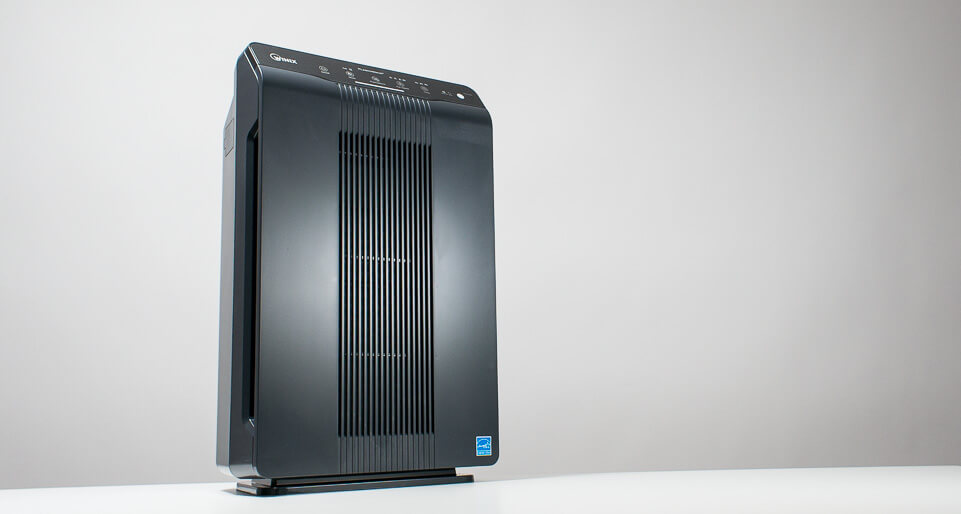

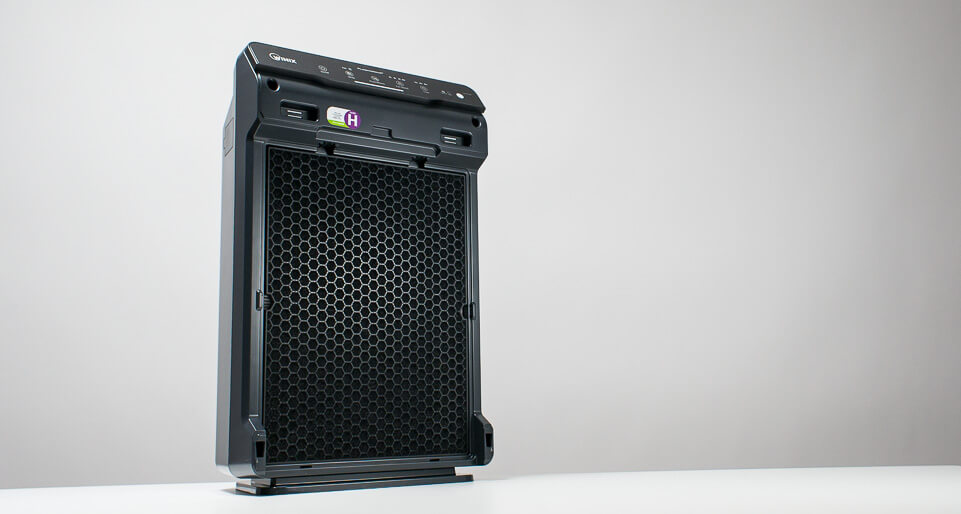


Analysis
A step by step breakdown of the Winix 5500-2's performance.
Air Processing Performance
Test Results
In a 150 sq. ft. test environment, the HEPA equipped approx. 250 CFM Winix 5500-2 lowered room particle concentration from 10,000 particles per cubic ft. (dirty air) down to 1,000 particles per cubic ft. (clean air) in 9 minutes.
Two factors determine the unit’s results in this test:
The quality of the particle filter
for most units this is a HEPA filter
The total amount of air the air purifier is able to process per unit time
we use CFM (cubic feet per minute) as the unit of measurement here. CFM can vary dramatically from one model to the next
Thus, it is a combination of the 5500-2’s HEPA filter and 250 CFM that allowed it to clean the air in our test room in only 9 minutes. The Winix 5300-2 also has a HEPA filter and also outputs at approx. 250 CFM and so it’s not surprising that it garnered the exact same result in our testing – 9 minutes to clean the air in our test room.
The Coway Mighty is another HEPA equipped 250 CFM unit we tested. It cleaned the air in the room in 10 minutes.
Smaller units with less CFM took longer. The approx. 140 CFM GermGuardian AC4825 took 23 minutes. Units with more CFM were generally faster. The approx. 430 CFM Coway AirMega 400s took only 4 minutes.
The second part of our particle removal test involved allowing the air purifier to continue to run indefinitely to see how low of an overall concentration it was able to achieve. The lowest concentration possible was 100 particles per cubic ft. This was as close to 0 (air completely free of particles) as our testing procedure and equipment allowed for.
It took only an additional 6 minutes for the Winix 5500-2 to further lower room particle concentration from 1,000 particles per cubic ft. down to 100 particles per cubic ft. Thus, it was able to achieve as low as a room particle concentration as we were able to measure in a total of 15 minutes (9 minutes from the starting point of 10,000 particles per cubic ft. down to 1,000 particles per cubic ft. and then 6 minutes more to get from 1,000 down to 100 particles per cubic ft.).
Comparable units like the Winix 5500-2 and Coway Mighty were able to achieve this same ultra-low concentration of 100 particles per cubic ft. in similar times. The same was true for higher CFM units like the Coway AirMega. They too were able to achieve an ultra-low room particle concentration of 100 particles per cubic ft.
Smaller lower CFM units were not as successful. Given an indefinite amount of time the GermGuardian AC4825 was only able to achieve a room particle concentration as low as 500 particles per cubic ft. The Honeywell HPA100 was only able to get room particle concentration down to 900 particles per cubic ft. This was the trend for smaller lower CFM units. They were not able to achieve the same level of ultra-low room particle concentration as higher CFM units like the Winix 5500-2 and Coway Mighty.
Filter Analysis
Particle Filter
The Winix 5500-2 uses a HEPA filter to filter out particles like mold spores, allergens, and dust from the air. The 5500-2 is equipped with three different filters – one to filter out particles, one to filter out unwanted gases, and one to filter out large particles and fibers. The unit’s HEPA filter is the first in this list – the unit’s primary particle filter.
HEPA filters are the most commonly used particle filters in the air purifier industry. High end units like the IQAir HealthPro Plus and Austin Air HealthMate use the exact same type of particle filter as the Winix – a HEPA filter. Lower end units like the GermGuardian AC4825 also often use HEPA filters. The AC4825 is equipped with a HEPA filter.
The HEPA filters on all of these units works exactly the same with exactly the same efficiency no matter the model. A HEPA filter traps 99.97% of particles that travel through it. It does so at this same efficiency no matter if it’s a $900 IQAir or $90 GermGuardian. The difference between these models lies in other areas – like output, gas filtration quality, etc. – not in particle filtration quality.
In summary: the Winix’s HEPA filter is very good at what it does (removing particles) which is why it’s the industry standard for this task (of particle filtration). But don’t expect the Winix’s HEPA filter to be any better than the same type of filter (HEPA) in the Winix 5300-2, Coway Mighty, Coway AirMega, IQAir, Austin, or GermGuardian. All of these units provide very similar particle filtration quality.
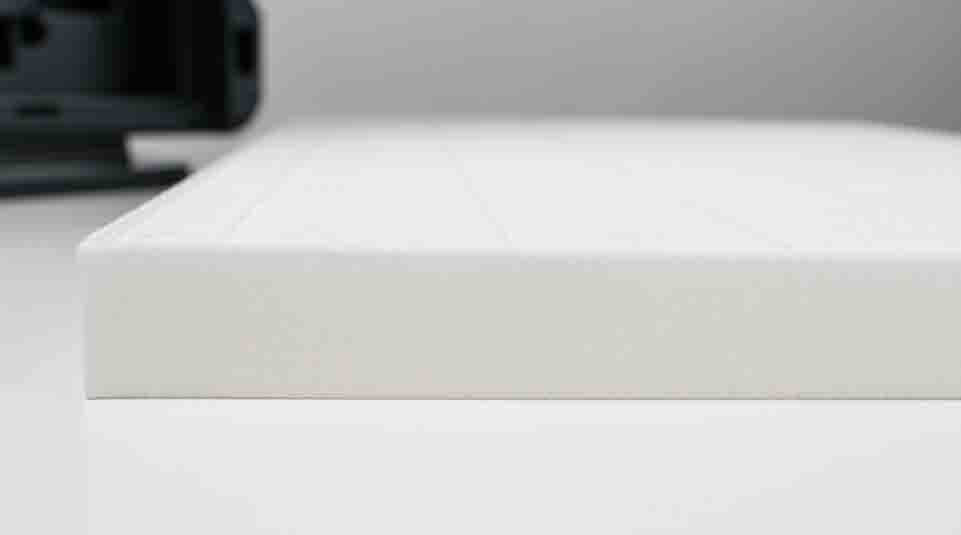
Gas Filter
Like most other air purifiers on the market, the 5500-2 uses a carbon filter for gas filtration (removing unwanted gases like VOC’s and odors). Unlike most other units on the market it uses a carbon filter that contains actual carbon pellets. The pellets are held inside a plastic honeycomb-like frame.
Most other units on the market, especially at the same or lower price points, have carbon filters that are made of a fibrous material that is only coated with carbon. This type of carbon filter is not as effective as the pellet-based type for removing gases.
Thus, if gas filtration is a priority for you the Winix 5500-2 is an excellent choice with its pellet-based carbon filter. Something like the Winix 5300-2 or Coway Mighty is not. These units use a fibrous type carbon filter which doesn’t filter gases as well.
If you are especially concerned about gas filtration, something like the IQAir HealthPro Plus or the Austin Air HealthMate should be considered. These units also have carbon filters containing actual carbon pellets; however, their carbon filters contain a greater quantity of carbon pellets than what is contained in the Winix’s carbon filter. This greater quantity of carbon pellets allows for a higher rate of adsorption of unwanted gases. It also extends the life of the carbon filter as it takes longer to saturate a filter that contains more carbon.
The HealthPro Plus’s carbon filter contains about 5 times as much carbon as that of the Winix. The Austin’s filter contains about 15 times as much carbon. All of this does come at a cost. The IQAir retails for about 6 times as much as the Winix and the Austin for about 4 times as much as the Winix.
The bottom line here is that the Winix greatly outperforms competitors at the same price point and is a great option for high quality gas filtration at its price point. We just want you to be aware of the fact that there are even better options out there, albeit at a considerably greater cost.
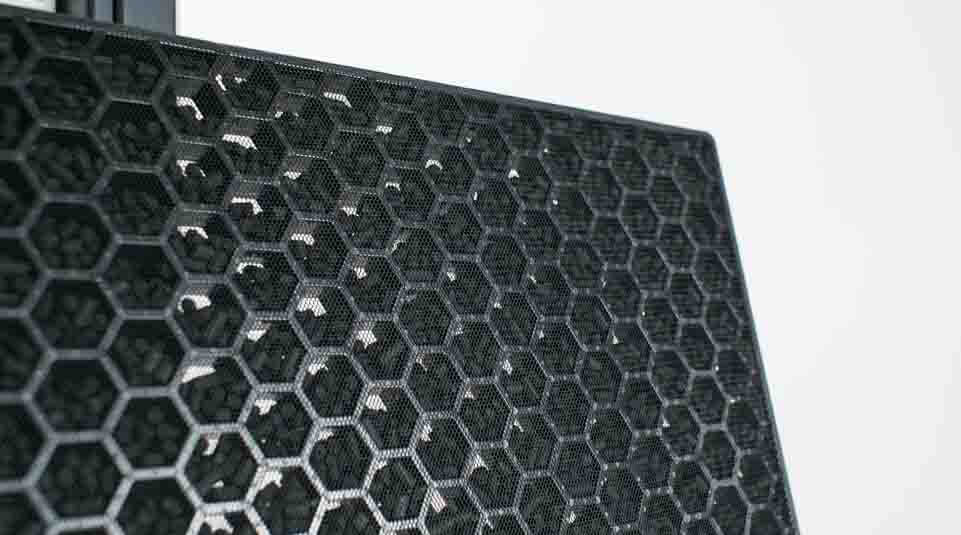
Pre-filter
The 5500-2 comes equipped with a mesh pre-filter for the purpose of filtering out larger particles and fibers before they can reach the unit’s primary particle filter – its HEPA filter. The HEPA filter has to be replaced at cost. The pre-filter can be brushed, vacuumed, or rinsed for free. And so the pre-filter saves you quite a bit of money over the course of ownership of the air purifier as it greatly extends the life of the unit’s HEPA filter, which would otherwise saturate very quickly with large particles and would have to be replaced much more frequently at a greater cost.
The Winix 5300-2 and Coway Mighty have this exact same type of washable mesh pre-filter. So does the Coway AirMega.
Cheaper units generally do not come equipped with a washable pre-filter. Something like the GermGuardian AC4825 only has a HEPA filter and a fibrous carbon filter. The carbon filter has to do the job of removing gases AND removing larger particles and fibers. The problem is that when it saturates with these larger particles and fibers, it has to be replaced at cost.
More expensive units like the Austin Air HealthMate and certain IQAir units come equipped with separate pre-filters, like the Winix, although they are not washable. They too have to be replaced, at cost. The pre-filters on these units do filter out more particles than the mesh pre-filter on the Winix. But remember, the last line of defense is still the HEPA filter, just like it is on the Winix. So, while the air traveling between the pre-filter and HEPA filter is cleaner on these units, the air traveling out of the unit and into the ambient air is just as clean. The only difference is that the HEPA filters on the units with more extensive pre-filters take longer to saturate, which is important because they’re HEPA filters are so much more expensive to replace.
Air Movement
The 5500-2 processes approx. 250 cubic feet of air per minute. This amount of air processing power allows it to properly clean air in rooms up to 300 sq. ft.
The 5300-2 and Coway Mighty have the exact same output – 250 CFM – and have the exact same area of coverage – 300 sq. ft.
Smaller less expensive units with lower CFM have a lower area of coverage. For example, the GermGuardian AC4825 has an output of approx. 140 CFM and an estimated area of coverage of 150 sq. ft.
Note that more expensive options don’t necessarily have higher CFM (and therefore greater area of coverage). High end units like the Austin Air HealthMate and IQAir HealthPro Plus have a CFM of 250 and 300, respectively. These units have a very similar area of coverage (approx. 300 sq. ft.) to that of the Winix.
Energy Efficiency
The 5500-2 is a highly energy efficient air purifier. The two most energy efficient air purifiers we tested were the 5500-2 and Coway Mighty. The Coway is slightly more energy efficient on lower fan speeds while the 5500-2 is more energy efficient on its highest fan speed.
On its highest speed, the Coway draws 72.3 watts. The Winix only draws 54.8 watts. Recall that higher end units like the Austin HealthMate and IQAir have a much greater quantity of gas filtration media and more substantial pre-filters as well. One of the downsides of this additional filtration media is worse energy efficiency. The Austin draws 94.6 watts on its highest fan speed at similar output (approx. 250 CFM) to that of the Winix and Coway. The IQAir draws a whopping 233 watts on its highest fan speed with only slightly greater output (approx. 300 CFM).
Again, on lower fan speeds the Coway is slightly more energy efficient than the Winix. The Coway draws only 3.2 watts on low. The Winix draws 5.5 watts at similar output. Note that while 5.5 is almost two time 3.2, both numbers are very small. In other words, even though 5.5 is much greater than 3.2 in terms of percentage, 5.5 is still a very low power draw.
For comparison, the GermGuardian AC4825 draws 34.2 watts on low at a similar output to the Winix and Coway on low. Most air purifiers we tested, including the Austin and IQAir also have a power draw in the 20 to 50 watt range on low.
All in all, either the Coway Mighty or Winix 5500-2 are the best options on the market, if energy efficiency is a priority for you. We recommend running either unit on its highest fan speed to initially lower particle concentration in the room and then to switch it to a lower fan speed to maintain that low particle concentration at peak energy efficiency.
Note: the 5300-2 had very similar results to the 5500-2 as well.
Noise Output
The 5500-2, like most other air purifiers on the market, makes a substantial amount of noise on its highest fan speed. The good thing here is that the noise is more of a white noise than anything else. It’s not an unpleasant sound – just a wind noise. On the negative side of things, you absolutely have to set it to this highest fan speed to properly lower particle concentration in large rooms up to 300 sq. ft. After running it for an hour or so you can set it to a lower fan speed at much lower noise output to maintain a low particle concentration. But you absolutely have to set it to a high fan speed with substantial noise output initially.
The 5500-2 had a very similar noise output profile to that of the Coway Mighty. The Coway was measured at 66.1 dB on high (its highest fan speed) and the Winix was measured at 67.5 dB on turbo (its highest fan speed).
Noise output drops off dramatically once you set each unit to its second highest fan speed. Both the Coway and Winix were measured at 48.9 dB on their second highest fan speed. On low, both units are essentially whisper quiet with a noise output of only 40 dB.
Most other air purifiers we tested had a similar drop off from highest to second highest fan speed - usually from a raw dB number in the 60s down to a raw dB number in the high 40s.
The difference between a unit like the Coway or Winix and a smaller unit like the GermGuardian AC4825 or Honeywell HPA100 is only evident when you compare output to noise output – CFM to dB.
A smaller unit like the Honeywell HPA100 has to be set to its highest fan speed to output at approx. 110 CFM. On this fan speed its noise output was measured at 68.7 dB. Recall that the Winix and Coway were measured at 67.5 dB and 66.1 dB respectively – but at approx. 250 CFM of output. Thus, a larger unit like the Winix or Coway gives you more than twice the output at a similar noise output on their highest fan speed.
Things get even worse for smaller units when you consider real world applications. For example, let’s say you’re looking for an air purifier for a smaller room around 150 sq. ft. Either the Winix or Coway can be set to their second highest fan speed at an output of approx. 100 to 120 CFM with a noise output under 50 dB. This is sufficient output to properly lower particle concentration in a smaller room. The Honeywell has to be set to maximum fan speed to provide the same output at a much greater noise output – close to 70 dB.
Thus, if you’re looking for an air purifier for a smaller room, a larger unit like the Winix or Coway is a much better option if noise output is a concern for you. They can be run at lower fan speeds at much lower noise output and still provide sufficient air processing power (output/CFM) to properly lower room particle concentration in such a room.
In larger rooms you simply cannot use a smaller unit to properly lower particle concentration in the room. You have to set a larger higher CFM unit like the Winix to maximum fan speed initially to properly lower room particle concentration and then, only after running it for at least an hour or so, can set it to a lower fan speed at a lower noise output.
Durability
The Winix 5500-2 is definitely one the most well-built air purifiers we tested. It was one of only a handful of air purifiers we tested that is not made in China. The Winix is made in Korea, the Austin is made in the USA, and the IQAir is made in Switzerland. Not surprisingly, these were three of the most well-built units we tested.
On the negative side of things, the Winix only comes with a 1 year warranty. The Austin comes with a 5 year warranty and the IQAir comes with a 10 year warranty as long as you register your purchase with the manufacturer. Even the Coway Mighty has a longer warranty (than the Winix) of 3 years.
Thus, if you’re concerned about long term reliability and overall durability, the Winix is a great option. It is definitely one of the better built units we tested. We would even go so far as saying that it’s better built with better quality parts and materials than the made in China Coway Mighty. However, if you are someone that will use a warranty if you have to, definitely be aware of its shorter warranty and the fact that most other air purifiers on the market come with a longer warranty.
Ease of Use
The 5500-2 has control panel lights that cannot be completely turned off. The unit does have a sleep mode but on sleep mode you give up all manual control of the unit (i.e. you cannot set fan speed) and a single LED still illuminates – the light that shows that sleep mode is activated.
Most other air purifiers on the market, including the Coway Mighty, also have control panel lights that cannot be turned off. The Coway Mighty, like the Winix, has lights that illuminate to show you which setting is activated and the overall air quality in the room. These lights cannot be turned off. Even the approx. $900 IQAir HealthPro Plus has control panel lights that cannot be adjusted or turned off.
There are units on the market that allow for full control panel light control. The Honeywell HPA series (including the HPA100) offers this functionality. So do all air purifiers manufactured by Levoit. The problem with these units is that they have major shortcomings otherwise. So while you can turn their control panel lights completely off, you have to make major sacrifices elsewhere – in terms of energy efficiency, noise output, etc.
The 5500-2 is one of the larger air purifiers we tested. However, it is by no means a large or heavy appliance. The unit is only about 2 ft. tall, a little over a ft. wide, and well under a ft. deep. It only weighs about 16.5 lb. It’s very easy to pick up this unit and move it from room to room or into/out of storage.
That being said, there are even smaller and lighter options available. The Coway Mighty is about 4 lb. lighter and half a ft. shorter although it is slightly wider and deeper than the Winix. Smaller units like the Honeywell HPA100 or GermGuardian AC4825 are under 10 lb. and physically smaller as well.
The more expensive options we’ve talked about throughout this review – the Austin HealthMate and IQAIr HealthPro Plus – are both much heavier and slightly larger. Their heavy weight – 35 and 47 lb. respectively – is mostly due to their more substantial gas filtration media.
The Winix 5500-2 comes equipped with all the features you’d expect in an air purifier at its price point – namely a timer, air quality sensor and display, auto mode, and sleep mode. The Coway Mighty offers the same functionality. The Winix also comes with a remote while the Coway Mighty and Winix 5300-2 do not.
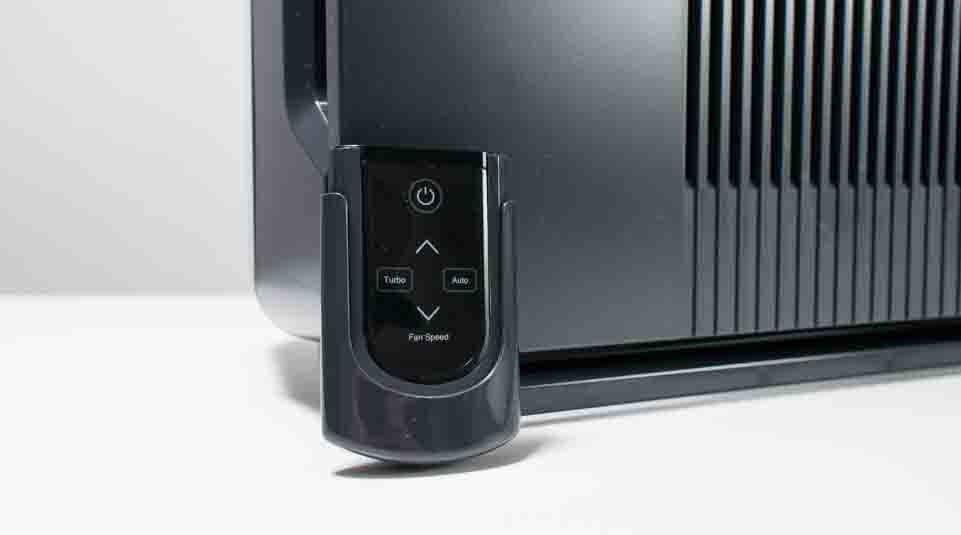
Less expensive options like the GermGuardian AC4825 generally don’t come with a timer, an auto mode, or air quality sensor.
More expensive options are a mixed bag. The Austin HealthMate has three fan speeds with no extra settings – no auto mode, no sleep mode, nothing. A single knob controls these three fan speeds with no extra buttons or knobs for additional settings. The IQAir HealthPro Plus has a more substantial timer and more fan speeds than the Winix but it doesn’t have an auto mode or air quality sensor.
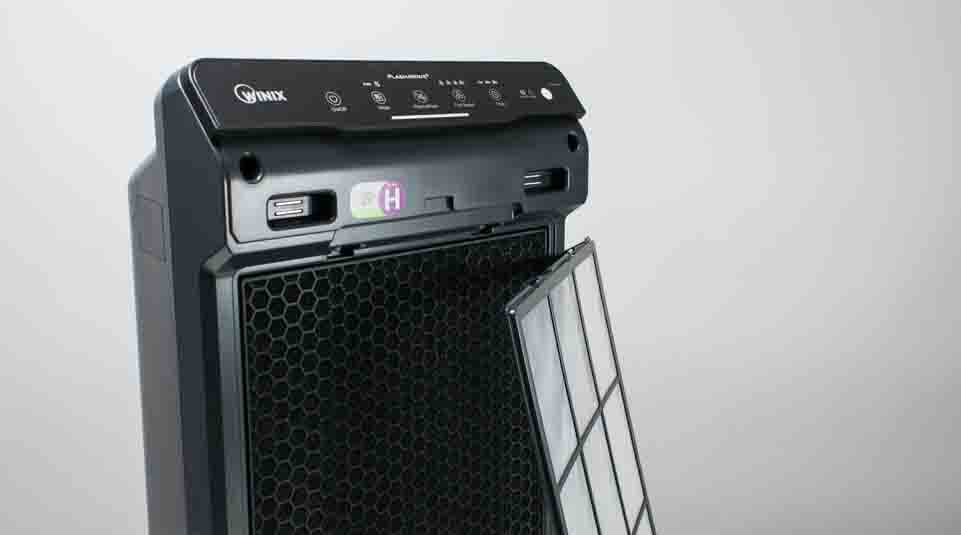
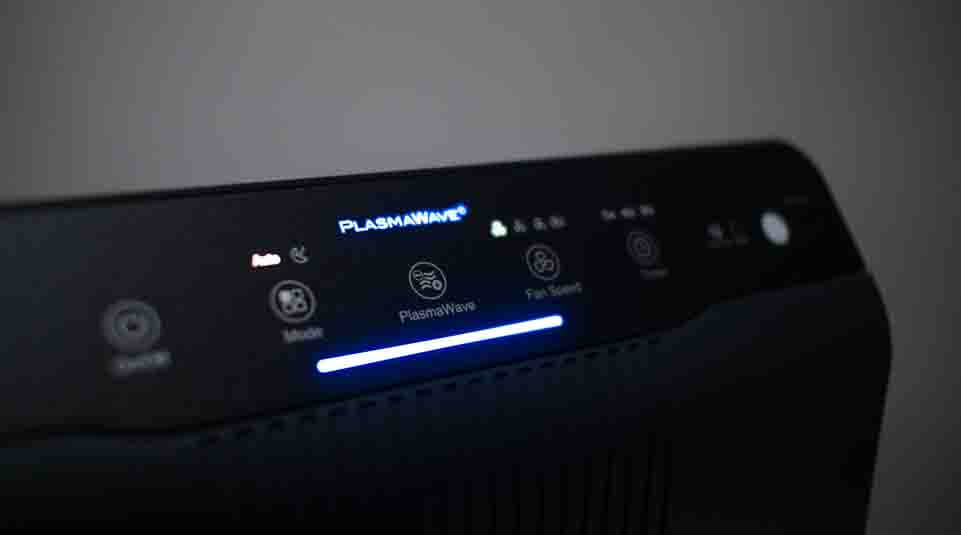
Value
The Winix 5500-2 is perhaps the best value air purifier on the market. No other unit on the market gives you 250 CFM of output, a HEPA particle filter, a pellet-based carbon gas filter, a separate washable pre-filter, and a remote at the same price point of approx. $150.
The approx. $120 Winix 5300-2 lacks a remote or a pellet-based carbon filter. So does the approx. $200 Coway Mighty – it comes with a fibrous carbon filter and no remote.
More expensive options provide more substantial gas filtration but not much else. They also cost substantially more – you’re looking at cost of approx. $600 for the Austin HealthMate and approx. $900 for the IQAir HealthPro Plus.
Cheaper options like the GermGuardian AC4825 have lower output (CFM), lack a pellet-based carbon filter, and don’t have a separate pre-filter. Not to mention the fact that they run less energy efficiently and are noisier in the applications where they’re used the most (small rooms).
Value is about what you get for what you pay for. And you get the most for the least with the Winix 5500-2.
Verdict
Our bottom line recommendations.
Recommendation compared to 5300-2
The 5300-2 has the exact same dimensions and the exact same control panel – is ALMOST the exact same air purifier - as the Winix 5500-2. The biggest difference between them is each unit’s carbon filter. The 55’s carbon filter has actual activated carbon pellets for better adsorption of gases while the 53’s carbon filter is comprised of a fibrous material that is only coated with carbon. The 53 is a little bit less expensive primarily for this reason (and also the fact that the 55 has a remote while the 53 does not).
All in all, we don’t feel the price difference – about $20 – warrants downgrading from the 55 down to the 53.
Recommendation compared to Coway Mighty
The 5500-2 is one fo the best air purifiers we’ve tested so far. No other unit on the market provides the same level of particle and gas filtration at the same price.
Probably it’s biggest competitor, at least at this time, is the Coway Mighty.
The Coway normally retails for about $50 more. It has the same output as the Winix. It also comes with a HEPA filter and washable pre-filter like the Winix.
But the Winix has a better carbon filter – pellet-based – for gas filtration – vs a fiber based filter coated with carbon with the Coway. The Winix also comes with a remote – if that’s important to you.
The Winix does have a shorter warranty – only 1 year – vs 3 years with the Coway.
But our inspection of both units lead us to believe the Winix is the better built of the two with slightly better quality parts.
In terms of energy efficiency and noise output both units are very similar.
All things considered we would probably give the nod to the Winix. BUT that doesn’t make the Coway a bad option. We believe you won’t regret your purchase buying either one of these two units.
Add a Comment
Have a question or comment? Let us know below.

Comments (14)
I do want to compliment you on the thorough and insightful reviews, not just with the Winix, but across the site -- a testament to your background and hard work.
That being said, it surprised me slightly that you've neglected to research, elaborate, or draw any insights into Winix's "plasmawave" technology. A cursory glance at the spec sheets would reveal this to be yet another ionizing model, and although you reveal this feature being off during tests within the comments, you have not spoken about this within this review itself. Perhaps you cover this topic elsewhere on the site and it moot, but I would have at least liked the acknowledgement of the feature, and maybe the pretty well established point that ionizing air creates O3, and ozone is bad for human health. We're not still debating this as a hypothesis are we?
Thank you for allowing me to comment, and I do appreciate the detailed reviews. I look forward to the continued reading and watching.
I give a full analysis of ionizers like the Winix's "plasmawave" technology here.
I don't really comment on it in the review because I consider it to be a superfluous feature that doesn't really impact the air purifier's performance.
It's also a feature that can very easily be turned off and kept off if you're concerned about ozone release. Though even with it turned on, the unit is still completely safe to use.
Is it possible to use the 5500-2 filters with the 5300-2? I purchased a 5300 prior to reading up on the difference between fibrous vs. pellet-based carbon filters. Aside from that and the remote, it looks like the units are nearly identical.
Unfortunately, no. The 5500-2 filters will not fit in the 5300-2.
Hey there, appreciate all the teaching & research you guys have done and I'm looking to purchase this model for my bedroom based on your recommendation, however my bedrooms very small and has little air circulation. So i just wanna make sure that if I keep this product with the plasma-wave off I should have no Ozone emissions what so ever?
Thanks
Yes, that is correct. With the ionizer turned off it's impossible for the 5500-2 to release ozone. And even with it, turned on, it's still completely safe to use.
Would you be able to provide the CFM/W details you measured for each fan speed? Looking to run this 24hrs on a higher speed for a larger room, but turbo is way too loud. I know you said it's about a 10/1 for the lower ones, but knowing the exact values would be great.
I only have the CFM/W data readily available for three fan speeds:
4.55 - highest
10.71 - second highest
11.93 - lowest
Do you have a chart or table that lists the CFM/Watt at every speed for all the air purifiers you tested? I am wondering what is the most efficient speed to run the purifier at.
I wanted to buy 5500-2 but its not available in EU, those are:
https://winixeurope.eu/air-purifiers/
Any of those comparable to 5500-2?
We recommend the Winix Zero (a 5300-2 equivalent) or the Winix Zero Pro (an approximate 5500-2 equivalent) for the EU market.
What do you make of the ozone that supposedly being released when using this product? Is it true, and if so, dangerous?
The 5500-2 can only release ozone with its plasmawave feature (ionizer) turned on. And this feature can easily be turned off and left off. Though even with it turned on the unit is still completely safe to use.
The Winix 5500 is now $250 on Amazon. The Honeywell hpa 300 is now $220 at Home Depot. Do the price inversions change your opinion now that the Winix is no longer a value play? I have a Honeywell hpa 300 and have been pretty happy with it but I’m willing to try something new if it’s a good value.
My office is only 70 square ft. Which Winix unit would you recommend? My priority is germ (bacteria and virus) protection.
Thank you so much!
Even for such a small space I would still recommend the Winix 5500-2.
1) Were the performance numbers with the plasmawave feature turned off?
2) Why do you believe this unit was able to clear the room the 100 level so quick compared to the Coway Mighty and other similar units?
3) How well is the filter/unit seal addressed (it looks like there isn't any attempt to create a tight seal between the filter and unit)?
1. Yes, with it turned off.
2. I was unable to pinpoint any particular factor that caused this difference in performance in my analysis.
3. All units in this price range seal to the same extent. I believe the sealing to be more than adequate for the Winix considering its performance in our testing.
Hello,
Great review, have a couple of questions.
1. Is there a connection between room size and filter life? Will the filters last longer in a smaller room?
2. Will the filter life be extended if I am using the purifier for less than 24 hours per day?
3. Does this air purifier cool the air or does it remain room temperature?
4. Should I be closing my room door completely when using an air purifier? What is the effect of leaving it slightly open? Will air be pulled into my room from the space at the bottom of the door?
5. Does the fan setting affect the life of the filter?
I really appreciate any information you can give me! Thank you!
1. No, filter life depends solely on the particle concentration in the room, how long you run the unit, and on what fan speed.
2. Yes.
3. It doesn't cool the air.
4. Yes, you should close the door. Higher particle concentration air will still be pulled into the room through the bottom of the door but much less so than if the door was left open.
5. Yes.
If I choose not to use the plasmawave feature how much is the filtering ability decreased? is it still worth buying?
The unit works very well without having its ionizer turned on. All of the tests I discuss in the review above were conducted with the unit's ionizer turned off.
I have a question. I just punched a Winex 5500-2 unit and I am very happy and absolutely amazed how great it performs.
I use it in the bedroom with about 300 sq feet floorspace.
My question is: My House has 1700 sq. feet including the Bedroom covering 300 Sq feet. What kind of air purifier or air purifiers
would I need to cover all of the exciting air space to cover the whole house.
Please reply since we both suffering fro allergies.
Thank you, J.R
We recommend one unit per 300 sq. ft. so you would need 6 units to cover your whole house.
I purchased this unit from Amazon based on your review. The warranty is 2 years as of 4/10/20.